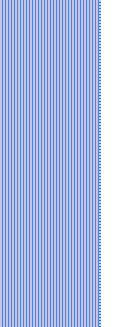
|
|

THE
|
|
|
The LCD display is what you see when you look for
cool computer monitors at
the store. This is the most popular display technology nowadays. You
will have to consider the specifications when selecting a monitor. The
specs you should be concerned with are; the width, resolution,
brightness,
contrast ratio, response time, the interface, and the viewing angle.
The width is the first item you
look at
when selecting a monitor. The first question you ask is; which one of
the big
computer monitors do
you want? The width is measured diagonally from opposite corners. Also,
think about the viewing area, sometimes there is an unused area at the
edge of the display.
Resolution refers to the
quality of the
picture. How small are the details that you can see. This is determined
by the pixel size, as well as the pixel pitch. A pixel is the smallest
piece of information in an image. You will have better resolution with
a smaller pixel size. The pixel pitch measures how many pixels per
inch. Again, you will have better resolution with a larger number of
pixels per inch.
Brightness is the amount of
light that
is emitted from the monitor. Think about viewing the monitor in a
darkened room, and then viewing the monitor in bright sunlight. Where
will you see the picture better? Which display works better in a well
lighted room? You begin to see that the display with the greater
brightness has the advantage. Brightness is measured in nits or
candelas per square meter. Looking at the retail offerings you see that
many monitors have 300 nits of brightness. This is good for most
applications.
Contrast Ratio is the ratio of
the light
emitted by the brightest color (white) to that of the darkest color
(black). The higher the ratio the clearer you see the image.
Response Time is the amount of
time a
pixel in an LCD monitor takes to go from black to white and back to
black again. It is measured in milliseconds (ms). Lower numbers mean
faster transitions and less ghosting.
The Interface is the connector
and cable
used to connect the computer monitor to the computer. The LCD display
can use an analog VGA connection or a digital interface like DVI,
HDMI, or DisplayPort. DisplayPort is not readily available at this
time.
The Viewing Angle is the
maximum angle
at which a display can be viewed with acceptable visual performance.
With the information provided here, you should be
able to go to your online computer parts store and select the monitor that satisfies your requirements. Make sure you
check the computer monitor ratings.
If you would like to comment, or add any information to
this page, please do so. Use the Contact
Us form and we will respond as
quickly as possible. If you would like to ask any questions, use the Questions and Answers
form and an answer will be provided.
|
|
For additional information about the Computer monitor.
Return from this page to Peripheral devices.
